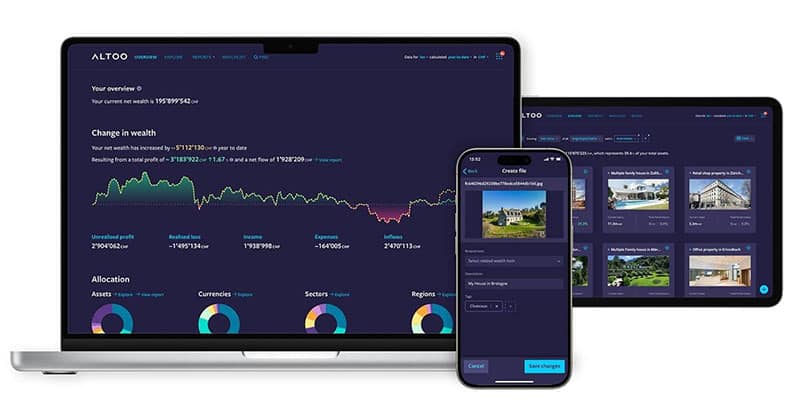For Ultra-High Net Worth Individuals (UHNWIs) and High Net Worth Individuals (HNWIs) keen on sustaining their legacies, understanding and leveraging the digital preferences of these younger generations might be essential.
This article aims to delve into how Gen Y and Z are compelling family offices to expedite their digital transformation journey, thereby reshaping the paradigms in which wealth is accumulated, communicated, and, most importantly, preserved for future generations.
Before we delve into the intricacies of this transformation, it’s crucial to understand who comprises Gen Y and Z. Also known as Millennials, Gen Y refers to people born between the early 1980s and mid-1990s. Gen Z follows, born from the mid-1990s to the early 2010s. Both these generations are digital natives; they have grown up with the Internet, smartphones, and other digital technologies as part of their everyday lives. The speed and immediacy with which they access information, communicate, manage risk, and make decisions are intrinsically tied to these digital experiences.
The Digital DNA of Gen Y and Z: How They Differ From Previous Generations
It’s hardly surprising that Gen Y and Z bring a fresh approach to the world of wealth management. Unlike their predecessors, their developmental years coincided with the proliferation of digital technologies. While Baby Boomers may have had a say in the initial adoption of tech solutions, these younger cohorts were practically born with smartphones in their hands.
Your Wealth, Our Priority: Altoo's Consolidation Power, Secure Document Management, and Seamless Stakeholder Sharing for High Net Worth Individuals. Preview Platform.
As many as 98% of all Generation Zers worldwide own a smartphone, the GlobalWebIndex report confirms.
- Gen Zers make up 26% of the global population and are projected to constitute 27% of the workforce by 2025.
- In the United States, Gen Zers are expected to account for 40% of consumers.
The Impact of Being Digital Natives
As digital natives and a diverse generation, Gen Z’s reliance on technology profoundly shapes their life choices and consumer behaviors, significantly impacting the norms of traditional types of investment. From job selection to brand preferences and purchasing habits, their actions underscore the urgency for family offices to adopt digital-first strategies. Here are some telling statistics that highlight these shifts:
- A substantial 91% of Gen Zers say the technology would influence their job choices (Dell).
- 97% of Gen Z individuals discover new products through social media (Forbes).
- 55% of Gen Zers prefer eco-friendly and socially responsible brands (99designs).
- 53% of Gen Zers have made a purchase via a mobile device in the last six months (HireRight).
Given their deep-rooted relationship with technology, Gen Y and Z expect real-time updates and transparent dealings in their wide-ranging financial matters. This means their expectations from family offices differ substantially from those of their older counterparts. For instance, paper-based quarterly reports, once a staple in wealth management, might seem archaic to them. In place of bulky binders, they expect real-time dashboards, accessible via an app, detailing their financial portfolio.
The Need for Digital Transformation in Family Offices
While the statistics about Gen Z’s digital preferences underscore the generational shifts taking place, it’s crucial to understand why family offices—often the preserve of traditional, sometimes outdated methods—should consider a digital makeover.
Legacy Systems and Their Limitations
Legacy systems in family offices have been around for years, offering a sense of familiarity and stability. However, these outdated infrastructures present a slew of challenges:
- Inefficiency: Traditional systems often involve manual data entry and paper-based processes, which are time-consuming and prone to errors.
- Scalability: Legacy systems usually don’t scale well with increasing volumes of financial data, making growth a cumbersome process.
- Security Risks: Older systems may not comply with modern cybersecurity standards, exposing sensitive financial data to threats.
The limitations of legacy systems could potentially impact the effective management of asset allocation, which is particularly concerning for UHNWIs and HNWIs.
The Risk of Not Adapting
For family offices that choose to remain in their comfort zones, the stakes might be high. Here’s why:
- Loss of Competitive Advantage: Family offices risk becoming obsolete as others adopt more efficient digital solutions, offering better services to UHNWIs and HNWIs.
- Falling Behind in Customer Expectations: The next generation of wealth—Gen Y and Gen Z—are digital natives. The outdated systems do not meet their expectations for transparent, on-demand services.
- Regulatory Consequences: Failure to update systems could also mean not keeping up with regulatory changes, potentially leading to heavy fines or legal challenges.
The risks of not adapting to digital transformation could be detrimental to operational challenges in a fast-paced digital world.
Communication Platforms & Expectations
Understanding the limitations of legacy systems and the imperative for digital transformation is only half the equation. The other half is grasping the dramatic shifts in communication expectations driven largely by Gen Y and Z.
Real-time Updates and Multi-Channel Access
Both Gen Y and Z have grown up in an ecosystem of real-time information. Their expectation for quick, seamless information is non-negotiable, and this extends to their financial dealings. Here’s what this means for family offices:
- Speed: Updates about asset performance, market trends, or any financially pertinent information must be quick. Delays could lead to missed opportunities.
- Multi-Channel Access: The new generation doesn’t just sit behind a desk. They want access to information, whether they are on their laptop, tablet, or mobile phone. Family offices might need to invest in mobile-responsive platforms.
Real-time, multi-channel access to financial information is increasingly becoming a standard expectation for the tech-savvy generation.
The Value of Personalisation
With the advent of AI and big data analytics, personalisation has moved from a luxury to an expectation. The focus has shifted for UHNWIs and HNWIs under family office management towards:
- Tailored Recommendations: Algorithms can sift through market data to provide investment suggestions aligned with individual risk tolerance and financial goals.
- Customised Communications: Gone are the days of generic quarterly reports. Personalised dashboards with real-time updates can offer clients insights that are relevant to them.
Customised services could potentially drive higher client satisfaction and engagement, contributing to long-term relationships.
Investment Strategies for the Digital Age
In this rapidly evolving digital landscape, investment strategies are experiencing monumental shifts. To capitalise on this, family offices serving UHNWIs and HNWIs might want to embrace innovations and changes that resonate with the younger generations’ ethos and technological expectations. Below, we explore how Gen Y and Z are influencing investment paradigms that family offices should take into account.
Role of AI and Machine Learning
Artificial Intelligence (AI) and Machine Learning are essential tools that can provide significant advantages in financial decision-making. Here’s how:
- Data Analysis Through AI: Artificial Intelligence, or simply AI, can quickly look at a lot of information and make sense of it. This helps make better decisions by giving you valuable information that was hard to get before. In simpler terms, think of AI as a super-smart assistant that can read and understand data much faster than a human.
- Using Machine Learning for Risk Management: Machine learning is a part of AI that can learn patterns and make predictions. For example, it can look at how stock prices have changed in the past to suggest what might happen in the future. This helps in making safer investment choices by understanding risks better. Imagine it as a weather forecast for your investments.
- Automating Routine Tasks: Automation means letting computer programmes do repetitive tasks so that people can focus on more important things. For instance, instead of manually checking and adjusting your investments, a computer programme can do it for you. This means you have more time to think about bigger, more important investment decisions. It’s like having a self-driving car that takes care of the driving while you plan your route.
While adopting these technologies could be a significant leap, they could potentially offer robust tools for better decision-making and efficient operations.
Social Responsibility and Impact Investing
Sustainability and social responsibility are not merely trends but priorities for younger generations. A remarkable 55% of Gen Zers prefer eco-friendly and socially responsible brands (Source: 99designs). Here are a few points to consider:
- Due Diligence: Conduct comprehensive audits to ensure that investments align with ethical and sustainability criteria.
- Diversity: Consider diversifying portfolios to include green bonds, social impact bonds, and ESG (Environmental, Social, and Governance) investments.
- Transparency: Make sure to communicate how the family office is committed to responsible investing, a factor that could be essential for Gen Z and Y stakeholders.
The alignment of investment strategies with social responsibility not only appeals to younger generations but could also contribute to long-term value.











